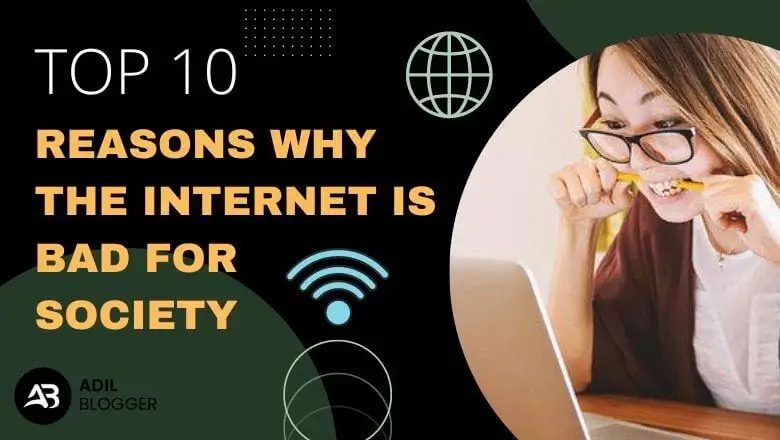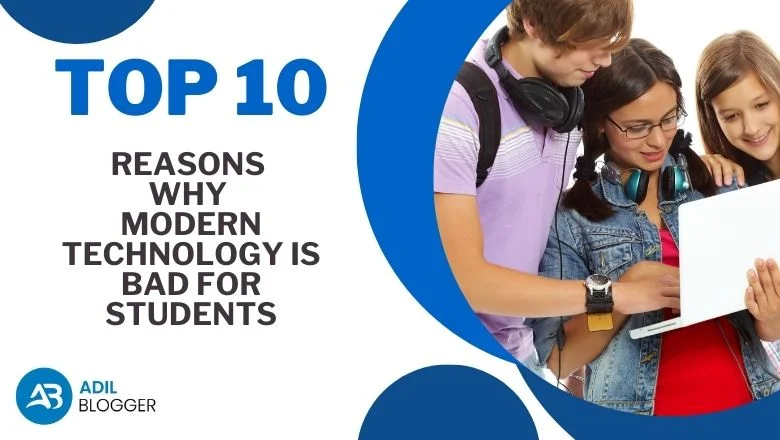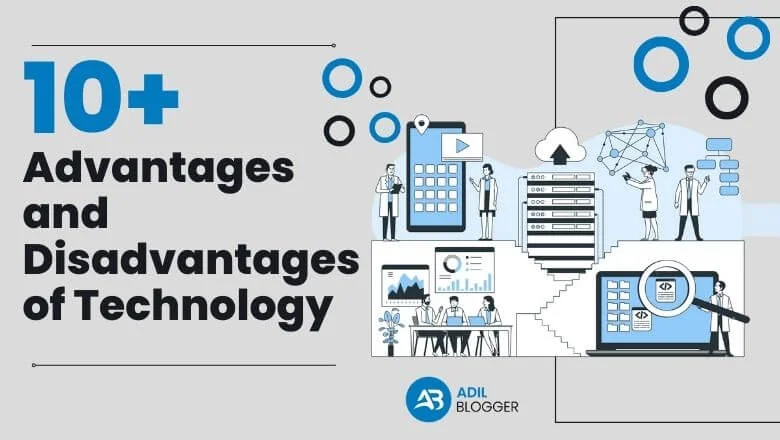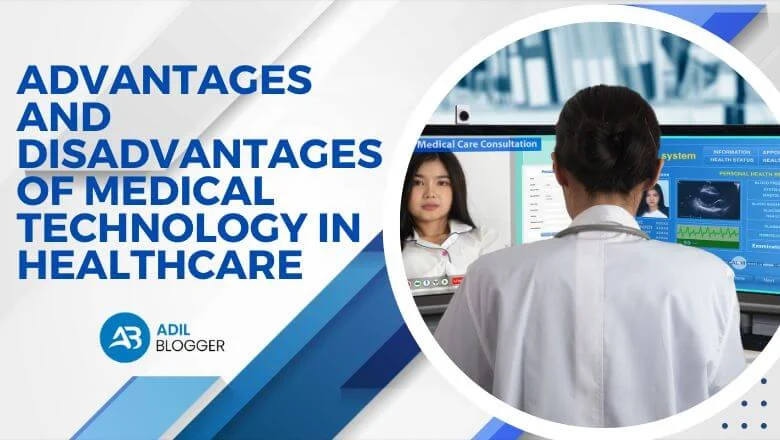10+ Advantages and Disadvantages of Communication Technology
In this article, I will let you know about the “10+ Advantages and Disadvantages of Communication Technology”. In today’s world, talking to someone can be as easy as tapping a screen.
We can share thoughts with people near and far in the blink of an eye. But, like any tool, there are both good and bad sides to it.
Table of Contents
Advantages and Disadvantages of Communication Technology

This article takes a closer look at how we communicate with the help of technology. We’ll talk about the advantages, like how it helps us talk quickly and connect with people who are far away.
But we’ll also talk about the things we might not always think about — how they change the way we talk and the things we need to be careful about.
Whether you’re super comfortable with gadgets or just getting used to them, understanding how we talk in the digital world is important.
By uncovering the pros and cons that accompany this digital era of communication, we hope to shed light on both the positive potentials and potential pitfalls.
So, grab your device and join us as we navigate through the ever-expanding world of technology in communication. Let’s explore how it has changed the way we connect, express ourselves, and ultimately shape our human relationships.
Advantages of Communication Technology
The advantages of technology in communication are given below one by one.
1. Faster Communication Through Technology
One of the most noticeable advantages of technology in communication is its ability to make our conversations faster and more efficient.
Gone are the days of waiting for weeks to receive a written letter or anxiously dialing a rotary phone, hoping to connect with someone far away. With just a few clicks or taps, we can now transmit messages across the world in seconds.
For example, the story of Sarah and James. They were childhood friends who lost touch when James moved overseas for work. The distance between them seemed insurmountable, and their once vibrant friendship began to fade.
However, thanks to advancements in communication technology, they were able to reconnect effortlessly.
Through video calls on their smartphones and instant messaging apps, Sarah and James found themselves catching up as if they had never been apart.
What once required long-distance phone calls or expensive plane tickets can now be achieved conveniently through digital means.
Faster communication has not only impacted personal relationships but has also revolutionized the business world. Companies can now conduct virtual meetings with partners from across the globe without the need for travel expenses and scheduling conflicts.
The power of faster communication cannot be underestimated. It has bridged gaps between individuals and businesses alike, creating a world that feels smaller and more interconnected than ever before.
Through technology, we have unlocked the potential for real-time conversations that transcend physical barriers – expanding our possibilities while bringing us closer together.
This faster communication has made our lives so much easier. It helps us stay connected, get things done quickly, and keep the world moving at a speedy pace. Thanks to technology.
2: Secure Communication
In this digital age, concerns about privacy and security have become increasingly prevalent. However, technology has also provided us with robust solutions to ensure our communication remains secure.
From encrypted messaging apps to advanced authentication methods, these innovations allow us to protect our sensitive information and interact with peace of mind.
Consider the story of Lisa, a freelance designer who often shares confidential files with her clients. In the past, she would have relied on physical documents or unsecured email attachments, putting her work at risk of being compromised.
However, by leveraging secure communication tools such as password-protected file-sharing platforms and end-to-end encrypted messaging apps, Lisa can confidently exchange sensitive designs and collaborate seamlessly with her clients.
Not only does secure communication benefit individuals like Lisa, but it also plays a crucial role in safeguarding the interests of businesses and organizations.
By embracing secure communication technologies, we are creating digital fortresses around our conversations and data.
Encryption algorithms provide layers of protection against interception or tampering, ensuring that our messages stay private between intended recipients.
These advancements in security not only enable us to engage in confidential discussions but also foster trust among individuals and businesses in an increasingly interconnected world.
So, next time, whenever you login into a secure messaging app or share sensitive information using protected channels, remember how technology is empowering us to communicate securely.
3: Efficient and Effective Communication
In today’s fast-paced world, efficiency and effectiveness are key factors in any successful endeavor. When it comes to communication, advancements in technology have revolutionized the way we interact, making it easier and more efficient than ever before.
For example, Sarah, a busy executive who needs to stay connected with her team despite being constantly on the go.
In the past, coordinating meetings or sharing important updates would have required multiple phone calls or lengthy email threads.
However, Sarah now relies on collaborative project management software that allows her to communicate seamlessly with her team members – all in one centralized platform.
From assigning tasks and setting deadlines to exchanging comments and files, this streamlined approach saves time and ensures that everyone is on the same page.
Effective communication is not just about speed; it’s about clarity and productivity too. With video conferencing tools like Zoom or Microsoft Teams, teams from different locations can come together virtually, enabling face-to-face interactions despite physical distances.
This helps foster stronger relationships and allows for an understanding of non-verbal cues crucial for successful collaborations.
Efficient and effective communication tools also extend beyond business settings.
For instance, teachers can use virtual classrooms to provide engaging lessons to students located anywhere in the world.
This eliminates geographical barriers and improves educational access for learners who may not have access to traditional classrooms.
By embracing these technologies, we unlock a world of efficient and effective communication possibilities.
So, next time you hop on a video call or share files instantaneously with colleagues or friends around the globe, remember how technology has made communication easy – paving the way for efficient collaboration and achieving excellence in whatever you do.
4. Global Communication:
Technology has revolutionized global communication, making it easier and more efficient. With advancements in smartphones, social media platforms, and digital tools, we can connect with people from all over the world effortlessly.
One of the key advantages is that technology erases geographical boundaries. Through video calls, instant messaging apps, and emails, we can engage in real-time conversations regardless of distance. This fosters personal connections and promotes cultural exchange.
Global communication through technology also transforms business operations by enabling seamless collaboration with international partners. This saves time and resources while opening up new markets.
5. Technology Allows Remote Communication:
In today’s fast-paced world, technology has revolutionized the way we communicate. One of its significant advantages is the ability to facilitate remote communication, bridging the physical distances between individuals and groups.
Whether it’s for work, education, or personal matters, technology has made it easier than ever to connect with people across the globe.
Take the example of video conferencing platforms like Zoom or Google Meet. With just a few clicks, you can have face-to-face conversations with colleagues, clients, or loved ones who are miles away.
Remote workers can collaborate seamlessly, eliminating the need for time-consuming and costly travel.
Educational institutions now offer virtual classrooms, enabling students from different countries to engage in interactive discussions and learn from renowned experts.
Another real-life example is social media platforms such as Facebook and Twitter. These platforms have become powerful tools for maintaining connections and fostering relationships regardless of geographical boundaries.
Friends living oceans apart can stay up-to-date with each other’s lives through posts, photos, videos, and instant messaging.
Remote communication not only facilitates day-to-day interactions but also plays a vital role during emergencies or crises. During natural disasters or global events like the COVID-19 pandemic, technology allows healthcare professionals to consult with specialists in different locations instantly.
This leads to faster decision-making and enhanced patient care.
With technology enabling remote communication, distances no longer pose barriers to collaboration, learning opportunities, or staying connected with loved ones across the globe.
6. Technology Provide a More Reliable Way to Communicate
Gone are the days of waiting patiently for letters or making long-distance phone calls with spotty connections. The advent of technology has revolutionized communication, providing us with more reliable and efficient ways to connect with others.
Take email, for example. With just a few clicks, we can send messages instantly to recipients around the world. No longer bound by time zones or postal delays, email allows us to communicate in real time, ensuring prompt and efficient exchange of information.
Plus, the ability to attach files and documents makes sharing important data quick and convenient.
Another real-life example is instant messaging applications like WhatsApp or Messenger. These platforms allow us to engage in seamless conversations with friends, family, or colleagues across different devices.
Gone are the days of missed calls and miscommunication; now we can receive instant responses and have group chats that keep everyone on the same page.
Technology has also brought about advancements in video calling platforms such as Skype or WhatsApp, these tools provide face-to-face interactions even when physical distance separates us.
Whether it’s catching up with loved ones or attending online meetings, video calls offer a more personal and engaging experience compared to traditional phone conversations.
Furthermore, social media platforms like Instagram or Twitter act as instant channels for sharing updates with a wide range of people simultaneously.
From news headlines to personal announcements, these digital platforms ensure information reaches its intended audience promptly.
Technology has made communication more reliable than ever before. We no longer have to rely solely on conventional methods that are prone to delays and miscommunication.
With email, instant messaging apps, video calls, and social media platforms at our fingertips, connecting with others seamlessly has become a reality.
7. Reduce Cost of Communication
In the realm of communication, technology has become a game-changer by significantly reducing costs. Take the example of traditional long-distance calls.
In the past, connecting with someone across the globe meant racking up hefty bills. Today, platforms like Skype, WhatsApp, and Zoom offer free or low-cost voice and video calls over the internet. This has revolutionized global connectivity.
Businesses, both small and large, have also benefited immensely. They can now conduct virtual meetings, webinars, and conferences, saving on travel expenses and time.
Additionally, email has replaced the need for postage and courier services, allowing for instant and cost-effective communication.
Social media platforms serve as powerful tools for personal and professional networking. They offer free messaging, voice, and video calls, eliminating the need for traditional text messaging or phone calls.
8. Greater Accessibility:
Advances in technology have vastly improved the accessibility of communication, empowering individuals across the globe to connect and engage like never before.
One remarkable example is smartphones and mobile internet. With just a few taps on their screens, people can access various communication platforms, browse websites, and connect with friends and family around the clock.
This level of accessibility has bridged geographical barriers, allowing individuals in remote areas to stay connected with the world and access information on a global scale.
Moreover, assistive technologies have revolutionized communication for people with disabilities. For instance, text-to-speech software enables those with visual impairments to listen to written content. Speech recognition tools facilitate effortless dictation for those with motor disabilities.
These innovations have broken down communication barriers and provided greater independence for individuals who might have otherwise struggled to participate fully.
Social media platforms such as Facebook, Twitter, and Instagram have facilitated effortless connection and interaction among people from diverse backgrounds.
These platforms serve as virtual spaces where users can share ideas, stories, and experiences instantly. They promote inclusiveness by providing a platform for marginalized communities to have their voices heard.
Technology has enabled online education opportunities that cater to diverse learning needs. E-learning platforms offer accessible formats such as closed captioning and adjustable font sizes to accommodate learners with various disabilities.
This flexibility allows individuals of all abilities to pursue educational opportunities that were previously inaccessible or limited.
Technology has played a pivotal role in enhancing accessibility by breaking down barriers of location, physical ability, and social inclusion.
From smartphones enabling constant connectivity to assistive technologies accommodating those with disabilities, technology continues to empower individuals worldwide for more inclusive communication experiences.
9. More Business Opportunities:
Technological advancements have revolutionized the business landscape, opening up a world of new opportunities for entrepreneurs and organizations alike.
One significant impact of technological advancements is the level playing field it has created for businesses.
In the past, only large corporations with substantial resources could reach a global audience. However, with the rise of digital platforms and social media, businesses of all sizes now have the opportunity to extend their reach and connect with customers worldwide.
For instance, let’s consider an artisanal jewelry maker who previously relied solely on local craft fairs to sell their products.
Through social media platforms like Instagram or Etsy, they can now showcase their unique creations to a global audience.
By leveraging targeted marketing strategies and engaging directly with customers, they can generate sales and establish meaningful connections, expanding their customer base exponentially.
Technology has enabled businesses to streamline operations and improve efficiency.
Communication tools like project management software and collaborative platforms enable teams spread across different locations to work seamlessly together.
This facilitates knowledge sharing, enhances productivity, and reduces turnaround time for projects. As a result, businesses can deliver products or services faster while maintaining high quality.
Technological advancements in communication have opened up new horizons for business growth.
From expanding global reach to optimizing operations and embracing remote work culture – these advancements provide businesses with more avenues to thrive in a highly competitive marketplace while fostering innovation and connectivity.
10. Mass Communication: Connecting the World
Mass communication plays a vital role in connecting people, communities, and societies on a global scale. one key aspect of mass communication is its ability to reach a large and diverse audience simultaneously.
Take, for example, the advent of television. With just the click of a button, news broadcasts can be delivered to millions of households around the world, providing real-time updates on current events.
This instant dissemination of information enables people to stay informed about local and global happenings, fostering awareness and understanding among individuals from all walks of life.
The rise of social media platforms further amplifies the power of mass communication.
Platforms like Facebook, Twitter, and Instagram have become digital hubs where news spreads rapidly at an unprecedented pace.
Users can engage with content by sharing, commenting, or even creating their own posts. This dynamic interaction fosters dialogue and exchange of ideas on a massive scale.
Mass communication also has the potential to drive social change. By magnifying important social issues through documentaries, campaigns or online activism movements gain momentum worldwide.
Mass communication serves as a platform for businesses to promote products or services to vast audiences efficiently.
Through strategic advertising campaigns across various media channels such as television or online platforms, companies can effectively reach their target markets and generate brand awareness on a grand scale.
Mass communication has revolutionized how we interact with information and each other on a global level. It connects people across borders instantaneously while shaping public opinion and catalyzing social change.
Its continued evolution promises even greater opportunities for meaningful engagement in our interconnected world.
11. The Elimination of Wires and Cables
In an era of constant connectivity, the elimination of wires and cables has revolutionized the way we communicate.
This advancement in technology has not only untangled our lives but has also brought about numerous benefits, from convenience to increased productivity.
One significant example is wireless charging. Gone are the days when we had to search for tangled cords and outlets to charge our devices.
With wireless charging pads and docks, simply placing your smartphone or other compatible devices on a designated surface powers them up effortlessly.
This seamless experience enhances user convenience while minimizing clutter and dependence on physical connections.
Another breakthrough in wireless communication is Bluetooth technology. Bluetooth-enabled devices, such as speakers, headphones, and smart home systems, provide seamless audio streaming without the need for messy cords.
Whether you’re enjoying music on the go or engaging in hands-free calls while driving, Bluetooth technology simplifies our lives by eliminating tangled cables and enabling hassle-free connectivity.
Wireless data transfer is yet another remarkable development in communication technology.
From sharing files between devices using Wi-Fi to transferring data over high-speed connections like 5G networks, wireless transmission simplifies collaboration and enhances efficiency.
For instance, you can instantly share large files between colleagues during meetings or seamlessly stream high-quality videos without interruptions.
The elimination of wires and cables in communication technology has unlocked new possibilities for individuals and businesses alike. As further advancements continue to emerge – such as wireless power transfer at a distance – our world becomes more connected than ever before, making our lives wire-free and truly wireless.
Disadvantages of Communication Technology
While the advancement of communication technology has undoubtedly brought about monumental changes and widespread benefits, it is also essential to acknowledge its limitations.
Some of the disadvantages of communication technology are given below one by one:
1. Privacy and Security Issues in Communication Technology
One significant disadvantage that arises from the increasing reliance on communication technology is the concern surrounding privacy and security.
The rise of communication technology has led to an unprecedented amount of personal data being shared online.
From social media platforms to messaging apps, individuals often unknowingly surrender their personal information. This raises concerns about privacy breaches and unauthorized access to sensitive data.
For instance, online shopping websites may sell customer information to third-party advertisers without consent, leading to unwarranted targeted ads or even identity theft.
As our dependency on communication technology grows, so do the risks associated with cyber threats. Hackers can exploit vulnerabilities in networks or deceive users through phishing attacks to gain unauthorized access to personal information.
A notable example is the Equifax data breach in 2017 when millions of customers’ credit card details and social security numbers were exposed due to poor security measures.
While communication technology has undeniably improved connectivity and convenience, it is crucial to remain vigilant about protecting our privacy and ensuring robust security measures are in place.
Striking a balance between enjoying the benefits of technology while safeguarding our personal information is key to mitigating the privacy and security issues that arise in this digital age.
2. Distraction from Real Life
Communication technology makes talking to each other very easy. We can talk to anyone, anywhere in no time. But there’s a problem – it is “Distraction from Real Life”.
- You must have seen friends using their phones more than talking to each other when they meet.
- Families at dinner tables are often on their phones rather than speaking with one another.
- People walking on the road also use their phones without looking around.
For example, imagine your friend announces her wedding news through WhatsApp. It doesn’t feel the same as if she were saying it in person with joy and laughter all around you.
So, as you can see, even though these technologies make life convenient for us; they distract us from living real-life moments.”
3. Potential for Misunderstanding
One noteworthy drawback of communication technology is what we call “Potential for Misunderstanding.” This tends to happen often in written correspondence like texting or emails.
For example: We text someone instead of meeting them in person. Sometimes, our words may not express what we truly feel.
The tone of voice and facial expressions aren’t there to support our words. This leads to misunderstandings.
You send a message to your friend saying, “We need to talk.” Imagine if they read that message in frustration or worry! They might think they are in trouble when you just want to share some good news.
So, while these tools can help us chat easily with people far away from us; they can also create confusion and misunderstandings. That’s why sometimes it’s better to talk face-to-face or on a call rather than through texts.
4. Lose the Art of Conversation
Communication technology, while making life simpler, can also hamper our ability to converse normally. Ever noticed how people struggle to maintain eye contact or keep a conversation flowing during face-to-face interactions these days? It’s because they’re so used to technology texting!
For instance, Tom is a high school student, who spends most of his time on social networks. Though quick at replying via text, he stumbles and stutters when talking directly with friends. His dependency on technology appears to hinder his capacity for normal interaction.
Situations like Tom’s are not uncommon in this tech-savvy era. Plenty of individuals prefer sending texts or DMs over having meaningful conversations.
This reliance on digital platforms may lead us to lose an important part of being human – the art of conversation.
Such situations highlight the irony – as communication technology advances, our basic conversational skills could deteriorate rapidly if we don’t balance our usage effectively.
5. Health Issues
Communication technology, for all its benefits, has an insidious downside: health complications.
One manifestation is psychological. Take Amelia, a young professional who spends 8 hours each day glued to screens in her office—emails and Zoom calls creating an endless virtual loop.
The physical world fades away as she sinks more extraordinary hours into the digital realm leading to isolation-induced anxiety and depression.
On the flip side, we have John—a youngster addicted to his gadgets. His recreation solely consists of communicating with friends via social media or multiplayer games.
A sedentary lifestyle sets in unintentionally: outdoor activities are replaced by screen time resulting in obesity and posture-related issues like chronic backache.
Each example shows how using too much communication technology can cause health problems. What once was just a helpful thing can become a hidden danger to our health if we’re not careful.
We need to make sure we spend time with other people in real life and do physical exercise. That way, we can still take care of our health even though we often use technology to communicate.
6. Addiction to Communication Technology
Communication tech, like smartphones and laptops, can be addictive. For example, let’s consider a man named John. He’s glued to his phone all the time – talking to people across the globe from morning till dawn. His obsession grew over time.
John’s addiction had many negative effects. Firstly, he neglected his physical health. He stopped exercising and started gaining weight rapidly which subjected him to potential diseases like diabetes or heart conditions.
Secondly, there was a mental toll as well. The constant flow of information and online drama made John anxious, stressed, and restless– this made it hard for him to sleep at night.
Then socially too, things spiraled down. He got so absorbed in his virtual world that he neglected real-life relationships. People around him felt ignored and eventually distanced themselves from him.
In essence, while communicating technology is great but when misused it can lead one down a vicious spiral of addiction with severe consequences on their wellbeing. And so we need to use them wisely.
7. Dependence on Communicational Technology
Nowadays, young people are masters of texting and messaging, but they often struggle with face-to-face conversations.
Texting gives them time to think and carefully choose their words, which is different from spontaneous conversations where body language and tone play important roles.
This heavy reliance on technology also leads to people avoiding in-person communication and hiding behind screens.
Spending too much time alone can make it harder for individuals to understand others’ feelings or express their own emotions effectively.
We need to find a balance between using technology for communication purposes and developing essential interpersonal skills.
Technology can make things easier, but we shouldn’t forget the importance of personal interaction for personal growth and building strong relationships.
8. People Get Involved in Seeing Unwanted Things
In today’s digital age, one significant drawback of communication technology is the inadvertent exposure to unwanted content. With the vast expanse of the internet, it’s easy for individuals, especially children and teens, to stumble upon inappropriate or distressing material.
For instance, imagine a scenario where a curious teenager is conducting research for a school project on a search engine. In the process, they may encounter explicit images or content that is not age-appropriate. This unintended exposure can be distressing and even have long-lasting effects on their mental well-being.
Moreover, the rise of social media platforms means that users are sometimes subjected to cyberbullying, hate speech, or violent imagery.
Even with strict content moderation policies, some undesirable material can still find its way onto these platforms.
To mitigate this, it’s crucial for parents, guardians, and educators to educate young users about safe internet practices and employ parental controls or content filters.
Additionally, tech companies must continue to improve their content moderation systems to create a safer online environment for all users.
While communication technology offers incredible benefits, inadvertent exposure to unwanted content is a pressing concern. By remaining vigilant and implementing safety measures, we can work towards a more secure online experience for everyone.
9. Cyberbullying
One of the darker sides of communication technology is the prevalence of cyberbullying. This harmful behavior involves using digital platforms to intimidate, harass, or humiliate others.
It can take many forms, from hurtful comments on social media to sharing embarrassing images or messages.
For instance, consider a teenager who is constantly targeted by their peers online. Hurtful comments and malicious rumors can quickly spread through social media platforms, causing immense emotional distress.
The victim may feel isolated and afraid to speak up, which can have severe consequences on their mental health.
Cyberbullying is not limited by physical boundaries; it can happen to anyone, anywhere, and at any time. This anonymity often emboldens bullies, making it harder to identify and stop the harassment.
To combat cyberbullying, it’s essential for individuals to be vigilant and report any instances of harassment they encounter or witness.
Platforms must also implement robust reporting and moderation systems to swiftly address such behavior.
By raising awareness and fostering a culture of kindness and empathy online, we can work towards creating a safer and more inclusive digital environment for all users.
Remember, a single act of kindness online can have a profound impact on someone’s well-being.
10. Misinterpretation
One of the downsides of communication technology is the potential for messages to be misunderstood or misinterpreted. Unlike face-to-face conversations, where tone, body language, and facial expressions provide valuable context, digital communication lacks these cues, leading to confusion.
For example, consider a situation where a person sends a sarcastic message to a colleague through email or instant messaging. Without the visual cues, the recipient may interpret it as genuine criticism, leading to tension or miscommunication between them.
Furthermore, language barriers can exacerbate this issue, especially in global or multicultural settings. What may seem clear to one person might be open to multiple interpretations for another.
To mitigate misinterpretation, it’s crucial to be explicit and clear in digital communication. Emoji’s, while informal, can sometimes help convey tone. When in doubt, seeking clarification is a valuable practice to ensure everyone is on the same page.
By recognizing and addressing the potential for misinterpretation, we can foster more effective and meaningful digital interactions, ultimately strengthening our connections in this tech-driven world.
11. Deteriorating Language
Communication technology, while immensely powerful, has inadvertently contributed to the deterioration of language proficiency.
With the prevalence of shorthand, acronyms, and emojis, formal language skills are often neglected, impacting both written and verbal communication.
For instance, consider the rise of texting and messaging apps. While convenient, they encourage brevity and informality.
This can lead to a decline in proper grammar, spelling, and sentence structure. Younger generations may struggle with formal writing tasks as a result.
Moreover, the rapid pace of online communication can foster impatience. In-depth discussions are often replaced with quick exchanges, potentially hindering the development of critical thinking and eloquence.
To combat this trend, it’s essential to emphasize the importance of maintaining strong language skills. Encouraging reading, especially of diverse and challenging materials, can help reinforce proper language usage.
By recognizing the impact of technology on language and actively working to preserve and enhance language proficiency, we can ensure that effective communication remains a cornerstone of our digital age.
Conclusion
Communication technology has revolutionized the way we connect and interact with one another. The advantages presented by this technology are undeniable.
It offers faster, secure, and efficient communication, enabling us to bridge distances effortlessly. Through global connectivity, we have become more interconnected than ever, allowing for collaborations and relationships across borders.
Communication technology has provided the convenience of remote communication, making it possible to connect with people regardless of time zones or physical barriers.
This convenience has also brought about more reliable communication channels that reduce costs significantly.
However, it is essential to acknowledge the accompanying disadvantages. Privacy and security concerns have emerged as potential risks associated with advanced communication technologies.
The constant availability of digital platforms may also lead to distractions from real-life interactions.
Moreover, the ease of miscommunication through digital channels poses challenges in maintaining clear and effective dialogue. The art of face-to-face conversation may be compromised in a world reliant on screens and keyboards.
Furthermore, the excessive use of communication technology can contribute to health issues such as eye strain and sedentary lifestyles.
It can also lead to addictive behaviors resulting in dependence on digital interaction rather than fostering genuine connections.
In light of these advantages and disadvantages, it is crucial to find a balance in our use of communication technology.
By being mindful of privacy concerns while harnessing its benefits for improved productivity and collaboration, we can leverage this remarkable tool effectively.
Ultimately, the key lies in using communication technology as a valuable supplement to human connection rather than replacing it entirely.
By doing so, we can ensure a future where technological advancements enhance our lives while preserving the authenticity and depth of interpersonal relationships.
FAQs
How Can Individuals Maintain a Healthy Balance Between Digital and In-Person Communication?
Maintaining a balance between digital and in-person communication is crucial. Some tips include:
1) Schedule Digital Breaks: Designate specific times to disconnect from devices and engage in face-to-face interactions.
2) Prioritize Quality Time: When spending time with others, focus on meaningful conversations and interactions.
3) Set Boundaries: Establish clear boundaries for device usage, especially during important social or family events.
4) Practice Active Listening: Pay full attention when communicating with others, whether it’s in person or through digital means.
What are the Disadvantages of Technology in Communication Skills?
The disadvantages of technology in communication skills include:
1. Reduced Face-to-Face Interaction: Excessive reliance on technology can lead to fewer in-person conversations, which may hinder the development of strong face-to-face communication skills.
2. Misinterpretation of Messages: Text-based communication lacks non-verbal cues, making it easier for messages to be misunderstood or taken out of context.
3. Dependency on Screens: Overuse of screens for communication may lead to decreased proficiency in reading body language and facial expressions, which are vital aspects of effective communication.
4. Diminished Active Listening: Continuous exposure to digital communication may reduce the practice of active listening, a critical skill in understanding others.
5. Limited Emotional Connection: Technology can sometimes create a barrier to establishing deep emotional connections that can be fostered through in-person interactions.
So, these are the “10+ Advantages and Disadvantages of Communication Technology”, I hope you have gone through them.
if you have any kind of questions or suggestions regarding this informative article, you can ask in the comment section below.
I will respond as soon as possible.
Thanks for reading.
Keep learning with Adil Blogger.






